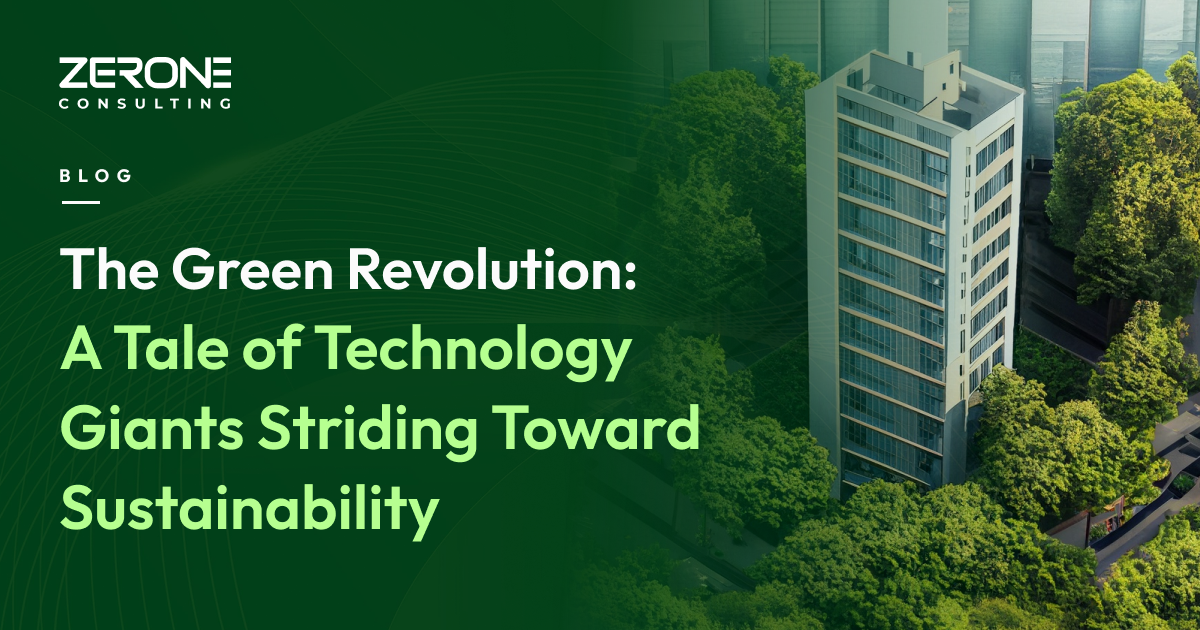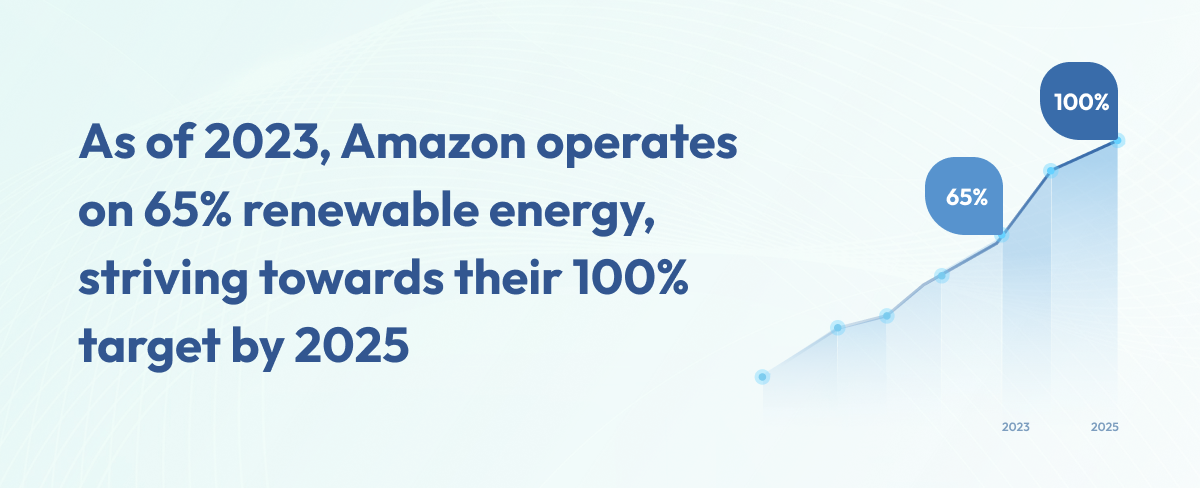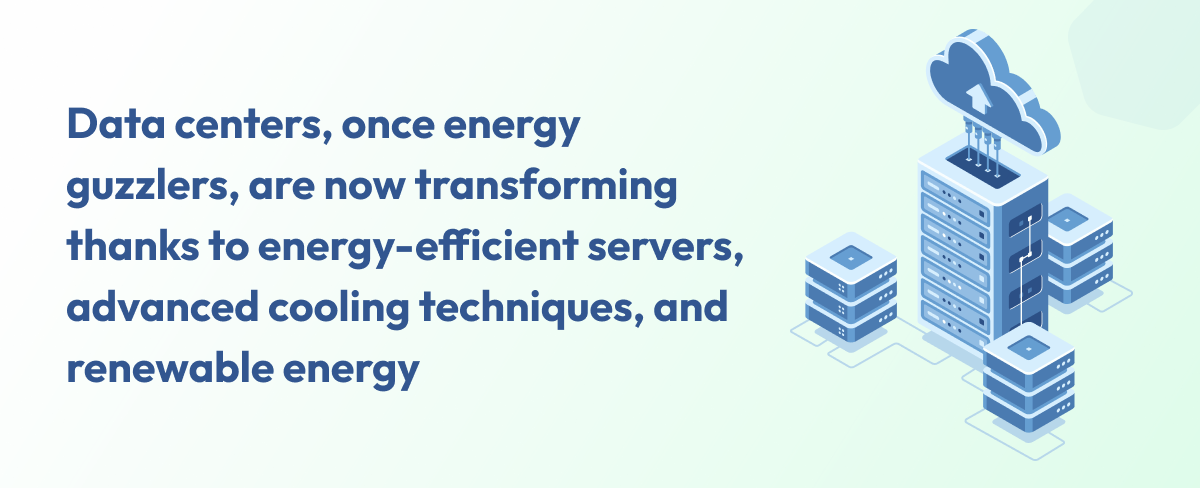In the heart of Silicon Valley, amidst a jungle of steel and glass, a peculiar revolution is taking root. Tech giants — once notorious for their carbon-intensive operations — are embracing green computing like never before. This change is not merely an effort to counter climate change; it’s a radical business transformation spurred by innovation, sustainability, and a shared sense of planetary responsibility.

It all began with a commitment, the kind that shakes up industries. When Google declared its intentions to achieve complete carbon-free energy by 2030, the tech world paused and took notice . To comprehend the gravity of this, consider this — as of 2021, the company’s annual energy consumption was roughly equivalent to the entire country of Lithuania.
Amazon, not one to be outdone, promptly announced its own Climate Pledge. This involved achieving net-zero carbon across their businesses by 2040, ten years ahead of the Paris Agreement. As of 2023, Amazon reported 65% renewable energy use, inching closer to their 100% renewable energy target by 2025.

Meanwhile, Apple, always keen on setting its own beat, has outlined an ambitious plan to be 100% carbon-neutral across its entire business, manufacturing supply chain, and product life cycle by 2030.

But how are they doing it? Let’s peel back the layers of this complex yet compelling transformation.
Enter Data Centers
Data centers — the invisible powerhouses that keep our digital world ticking — are infamous energy guzzlers. However, they’re now on a diet. Tech companies are investing heavily in energy-efficient servers, advanced cooling techniques, and renewable energy. Google, for instance, is using artificial intelligence to optimize energy use, achieving a 30% reduction in energy consumed for cooling .

Responsible Sourcing
The electronics industry is notorious for its adverse environmental impact, not just in energy use but also in the materials needed. Apple is tackling this head-on with its Material Recovery Lab, aimed at advancing recycling techniques and recovering valuable materials from electronic waste.
Carbon Offsetting and Removal
Carbon offsetting — a strategy to balance out emissions by investing in projects that reduce carbon dioxide — is a common practice among these tech giants. Microsoft even stepped it up… pledging to be carbon negative by 2030 and to remove all the carbon the company has ever emitted by 2050 .
Despite the progress, there’s a long road ahead. The digital sector generates an estimated 3.7% of global greenhouse gas emissions. The challenge is not just to lower this number but to rethink how technology can exist in harmony with nature.
The Role of Carbon Credits
Carbon credits are emerging as an innovative tool for tech companies in their mission to reduce their carbon footprints. But what exactly are carbon credits? In the simplest terms, one carbon credit represents the avoidance or removal of one metric ton of carbon dioxide from the atmosphere.
Companies can acquire these credits by investing in projects that reduce, avoid, or remove greenhouse gas emissions, such as reforestation or renewable energy initiatives. The purchase of these credits helps fund these projects while allowing the buyer to offset its emissions.
Notably, Microsoft has made a substantial commitment to carbon credits. As part of its ambitious plan to be carbon negative by 2030, Microsoft intends to shift from offsetting emissions via carbon credits. They plan to do this by investing in Direct Air Capture (DAC) technology, which essentially scrubs carbon dioxide directly from the atmosphere.
Similarly, Google has been carbon-neutral since 2007, and part of this achievement has involved the purchase of high-quality carbon offsets. To date, Google has offset all of its operational emissions since it was founded in 1998.
However, it’s important to acknowledge the controversy surrounding carbon credits. Critics argue that the system allows companies to buy their way out of their environmental responsibility, and that some carbon offset projects fail to deliver their promised environmental benefits. Therefore, while carbon credits can play a role in the transition to a green economy, they must be seen as part of a comprehensive approach to emissions reduction, rather than a solution in themselves.
Looking forward, tech companies are exploring the untapped potential of quantum computing, which could provide extraordinary energy efficiencies. The adoption of edge computing, processing data closer to its source, will also play a significant role in reducing the energy used in data transmission.
Green computing is neither a fad nor a marketing gimmick — it’s the future. We are standing at a precipice of where technology and sustainability intersect to create a better world for each and every one of us. The path we choose will determine not only the future of the tech industry but the planet itself.